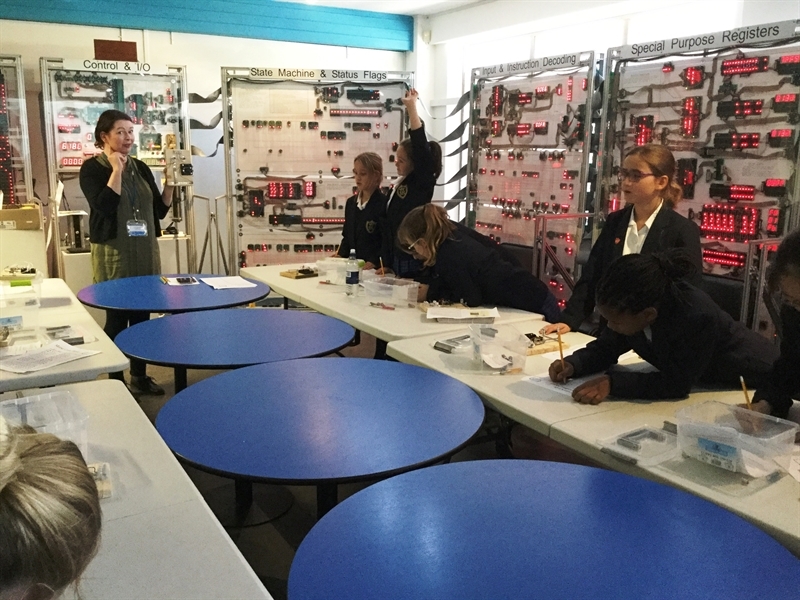'Computing History: Where Did All the Women Go?'

On Thursday 5 October Year 6 visited the Centre For Computing History here in Cambridge. The focus of the visit was a brand new exhibition entitled 'Computing History: Where Did All the Women Go?', which brought together information about the pioneering women whose contribution to the computing industry was undeniable, yet their stories have often been overlooked by a focus on the ‘great men’ that have been involved.
During the visit the girls participated in a series of practical activities, including constructing a Morse code signalling device, learning how to transmit and receive coded messages. They learnt how to program 30 year old BBC Micro computers using the text-based BBC Basic coding language, discussing the evolution of computers and their uses throughout history. Our Year 6 pupils were also invited to help officially open the exhibition!
The girls displayed impressive Computer Science skills, but also a keen interest in the development of computing and the historical figures who pioneered it. They engaged in conversation about observations from the day; asking intelligent and enlightening questions.
Dr Anjali Das, Head of Learning at the Centre, said: "We loved having [the pupils] here, what a brilliant bunch of young women!". So much so, that an exclusive invitation was extended to the girls and their parents to attend a presentation the following evening by Suw Charman-Anderson. The talk focused on why she set up Ada Lovelace Day, an international celebration on 17 October each year of the achievements of women in Science, Technology, Engineering and Mathematics (STEM).
All of the girls had a thoroughly enjoyable experience and now have a much greater understanding of the parts that they may be able to play in the next phase of developments within the computing and technology industries, by following in the footsteps of the pioneering women who have already been so instrumental in this field.